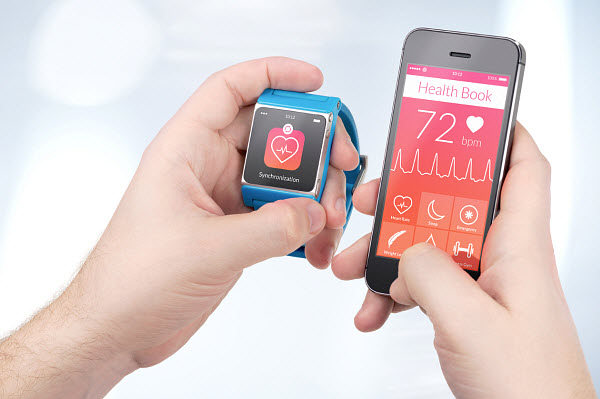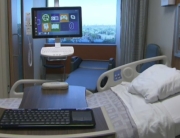It’s hard to envision a rubber band on the wrist as being part of a revolution in the health care industry. Wearable technological devices, such as Fitbit™ that monitor a person’s activity and sleep level, are just the tip of the iceberg when it comes to mobile health devices which have become a growing trend because of how they encourage patient engagement.

1. Better Patient Engagement
Mobile health, also known as mHealth, works on a simple premise – patients who are more engaged in their own health care become more accountable for their own health needs. According to a health study brief published by the People-to-People Health Foundation, they define patient engagement as a broad concept that includes helping patients increase their knowledge. “Patient activation refers to a patient’s knowledge, skills, ability, and willingness to manage his or her own health and care. Patient engagement is a broader concept that combines patient activation with interventions designed to increase activation and promote positive patient behavior, such as obtaining preventive care or exercising regularly. Patient engagement is one strategy to achieve the “triple aim” of improved health outcomes, better patient care, and lower costs.
2. Increased Cost Savings
The ripple effect of using mobile health devices to assist hospitals and the health care sector has introduced huge cost savings. With fewer health care dollars available, it’s no surprise more hospitals are jumping on the mobile health tool trend.
Typically, mobile health devices are used to collect and analyze health data, through such devices as heart and blood pressure monitors. And new advances in mobile technology have ushered in state of the art tools that can impact people in developing nations who often don’t have access to health care providers, basic antibiotics or even clean water – but many do have mobile phones and can access care through advances in mobile health. Innovations range from low-cost medical devices that attach to mobile phones to new delivery models that give patients access to health care providers through short message service (SMS), photos or videos. There are also apps for mental health services, including some for cognitive behaviour therapy.
A recent report by Lux Research, an independent research and advisory firm based in the United States, predicts the mobile health market will grow eightfold over the course of the next decade, from $5.1 billion in 2013 to $41.8 billion in 2023.
And with studies demonstrating a clear connection between the devices and cost reductions, that’s likely to grow. One study by the Robert Wood Johnson Foundation in the United States showed; “people who are engaged in their health care are more likely to stay healthy while those who lack the skills and confidence to manage their own care often require more of it and incur up to 21 percent higher health care costs.”
3. Motivation for a Better & Healthier Lifestyle
Wearing a rubber band on your wrist may seem inconsequential but it can also be a starting point for motivating people to adopt healthier lifestyles. Mobile health devices such as remote monitoring, work on the same basis. As the market for mobile health grows, we may well see more of them on our tablets and smart phones, such as programs that target chronic conditions, telemedicine, electronic records and e-prescribing.
The continuous growth in the mobile health sector is why Panacea, an award-winning patient beside entertainment solution, is investing so heavily in research and development in this area. “We’re aware that when people can manage their own health and, when they can share it with their doctors, there are better outcomes,” said Peter Christopoulos, executive director of i3 Solutions Inc. “That’s why better patient engagement and awareness is such a big part of the solutions we deliver.”
This blog will explore the many facets of healthcare in Canada and the benefits that Panacea™ patient and clinical engagement solution brings to the industry. Stay tuned for further blogs on Canadian Healthcare and how Panacea™ transformed one patient’s hospital stay along with studies on patient satisfaction.








